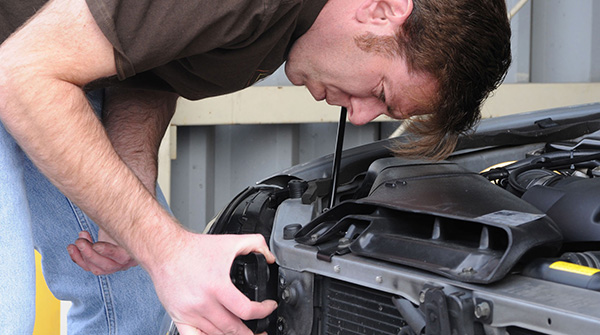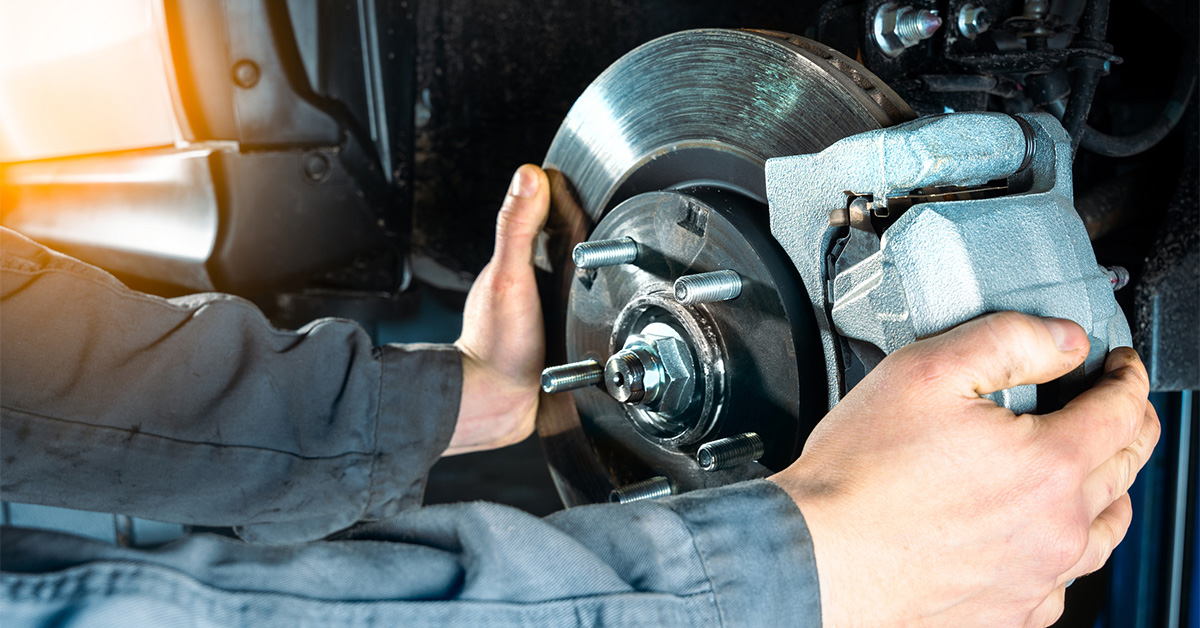Do you ever worry about your car breaking down on the road? Do you avoid regular car maintenance, hoping for the best? Well, these two thoughts are contradictory. If you’re not regularly getting your car serviced or at least doing the work yourself, you are asking for trouble and possibly a breakdown while you’re driving. Some types of vital scar maintenance may only need to be done once a year while others need to be performed more regularly. Below, we give you all the information you need to keep your car healthy and yourself safe. The more you car maintenance you do, the lower the chances are that you’ll have a breakdown. Also, by taking good care of your car, you will avoid an insurance increase because you won’t be as at risk for an accident.
Myths & Misunderstandings
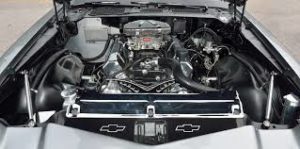 While you’re browsing through your owner’s manual, see when you have to change your timing belts and other things you may not be aware need changing. Don’t defer to myths about how long you should wait to change something either. It’s really in the manufacturer’s best interest for the car they made to function optimally. Trust your manual. Here, you’ll also learn if you’re using the right fuel. It may sound like the most obvious thing to know, but you’d be surprised at how many people void their warranties by destroying their car gas tank by filling up with the wrong fuel. If your car wasn’t built to run on the cheap stuff, you’re just asking for trouble! Double check your owner’s manual before you do any car maintenance.
While you’re browsing through your owner’s manual, see when you have to change your timing belts and other things you may not be aware need changing. Don’t defer to myths about how long you should wait to change something either. It’s really in the manufacturer’s best interest for the car they made to function optimally. Trust your manual. Here, you’ll also learn if you’re using the right fuel. It may sound like the most obvious thing to know, but you’d be surprised at how many people void their warranties by destroying their car gas tank by filling up with the wrong fuel. If your car wasn’t built to run on the cheap stuff, you’re just asking for trouble! Double check your owner’s manual before you do any car maintenance.
DIY Car Maintenance & Inspections
Engine
Just like the heart of a human body, the engine of a car determines how everything else operates too. People generally don’t have their engines checked until there’s a problem. Learn how to properly inspect the engine yourself to prevent a costly and dangerous problem instead. Preventative measures always cost less than repairs. You’ll also be lessening your chances of your car breaking down in the middle of a road or highway.
Mainly, the oil in your car’s engine can cause problems if not changed frequently. There’s nothing easier than getting an engine oil change around two to three times a year. For many cars, an oil and filter change is required every 5,000 to 6,000 miles, or every five to six months. It mostly depends on how often you drive your car and how far you go. The best way to know exactly how often you should need an oil and filter change is to check your owner’s manual.
You also don’t want to fall for advertised sales on oil changes. Often, these discounted rates do not include a filter change or they use inferior oil. If your car requires synthetic oil, they may use a cheaper oil that’s not good for your car’s engine type. Make sure to know exactly what’s being put into your car when you get an oil change. If you feel you must save money on this car maintenance measure, learn how to do your own oil and filter change instead.
Tires
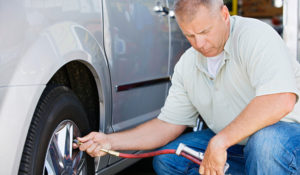 Making a habit of inspecting your tires once a week and checking the air pressure at least once a month is very important. When your tires are low on air, you use more gas, so you’ll be saving money by keeping them pumped. But be sure not to go overboard. Only fill your tires to specifications (again, refer to your owner’s manual).
Making a habit of inspecting your tires once a week and checking the air pressure at least once a month is very important. When your tires are low on air, you use more gas, so you’ll be saving money by keeping them pumped. But be sure not to go overboard. Only fill your tires to specifications (again, refer to your owner’s manual).
Checking the wear and tear on your tires is important too. You can do so with a simple penny test. To get the details on how to check your tires and how to do your own tire maintenance (rotations too) visit here. There’s no overstating how important it is to regularly rotate your tires so they wear evenly. If you’re doing the job yourself, make sure you are rotating them correctly based on your car’s make and model.
Fluids
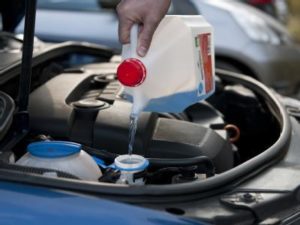 Some people do their own fluid change. For others, changing antifreeze, power steering coolant and other fluids is too much work. Still, you should at the very least be able to check the levels to make sure you’re car is not running low. Some cars have easy-to-read levels while others have gauges that require pulling out dipsticks. Check your owner’s manual to find the best way to check fluid levels. While your manual may not teach you how to do your own fluid change, it is a good starting point to, say, find where your transmission fluid is even located.
Some people do their own fluid change. For others, changing antifreeze, power steering coolant and other fluids is too much work. Still, you should at the very least be able to check the levels to make sure you’re car is not running low. Some cars have easy-to-read levels while others have gauges that require pulling out dipsticks. Check your owner’s manual to find the best way to check fluid levels. While your manual may not teach you how to do your own fluid change, it is a good starting point to, say, find where your transmission fluid is even located.
Leaks
Ignoring leaks is a regrettable thing to do. If your car is leaking oil and you run out while driving, your engine will cease and cause damage that costs thousands of dollars. Never ignore dark spots left behind by your car that indicate a leak. In fact, make it a point to check underneath the car before and after you park to see if your car is, in fact, leaking.
Also, check your car batteries for leaks. While you’re there, check to see if there is any buildup along the contacts. You can clean this stuff off with a specific battery cleaning brush (this will run you less than $5 at any Pep Boys) or take it in to the garage and ask to have it done for you. Buying a battery charge tester is also not a bad idea. It’s always nice to change a battery before it dies on the road. This is one DIY car maintenance that is simple and affordable to do.
Windshield Wipers
Replace your windshield wipers when they start to leave streaks. Visibility is the most important part of safe driving. This is not a difficult job and one that anyone can do themselves so don’t ignore that streak until you’re driving with a blocked view. Change them as soon they begin to obstruct your vision.
Air Filters
Don’t forget to change your engine’s air filters too. In your owner’s manual, you will find out how often you need to change yours. If it’s dirty, replace it, even if you’re below the estimated mileage that’s suggested in your manual. You may be driving on roads that cause the filter to get dirtier than average.
Spark Plugs
Spark plugs get worn out or filthy and need replacing. However, note that if this happens often, you should probably get your engine checked out to make sure it’s functioning properly. Do so before you experience a breakdown. However, needing to change spark plugs a couple of times a year is to be expected. For most standard copper spark plugs, you are advised to change them every 30,000 miles. This is an easy job on some cars and it’s difficult on others. Whether you do the job yourself or have a mechanic do it, make sure your spark plugs are in good shape.
Brakes
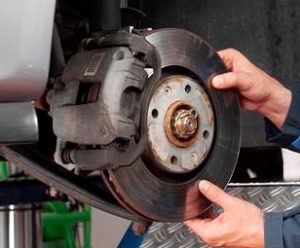 Last but certainly not least are your brakes. Have you done a brake check? You can see for yourself if there has been too much wear and tear on your brake pads by just looking through the spaces between the wheel’s spokes. The outer pad will be against a metal rotor. This should be at least ¼ inch thick. If you see less than ¼ inch you should have them inspected or replaced. Some people learn how to do their own brake changes, but if you’re not sure about what you’re doing, this is not one mechanism in your car that you want to take chances with. If you don’t brake properly, you will indeed have an accident, and that’s never a good thing.
Last but certainly not least are your brakes. Have you done a brake check? You can see for yourself if there has been too much wear and tear on your brake pads by just looking through the spaces between the wheel’s spokes. The outer pad will be against a metal rotor. This should be at least ¼ inch thick. If you see less than ¼ inch you should have them inspected or replaced. Some people learn how to do their own brake changes, but if you’re not sure about what you’re doing, this is not one mechanism in your car that you want to take chances with. If you don’t brake properly, you will indeed have an accident, and that’s never a good thing.
If you have squeak brakes but your pads look fine, you should still have them looked at. For some people, a worn brake pad makes a clicking noise. If you’re braking and it takes a long time for the car to stop or if it vibrates when you press it, you most likely need new brakes. Sometimes, a worn brake pad will pull your car to one side when you brake. If you are experiencing any of these situations, don’t diagnose the problem yourself, have your brakes checked immediately by a professional mechanic.
The information in this article was obtained from various sources. This content is offered for educational purposes only and does not represent contractual agreements, nor is it intended to replace manuals or instructions provided by the manufacturer or the advice of a qualified professional. The definitions, terms, and coverage in a given policy may be different than those suggested here and such policy will be governed by the language contained therein. No warranty or appropriateness for a specific purpose is expressed or implied.
